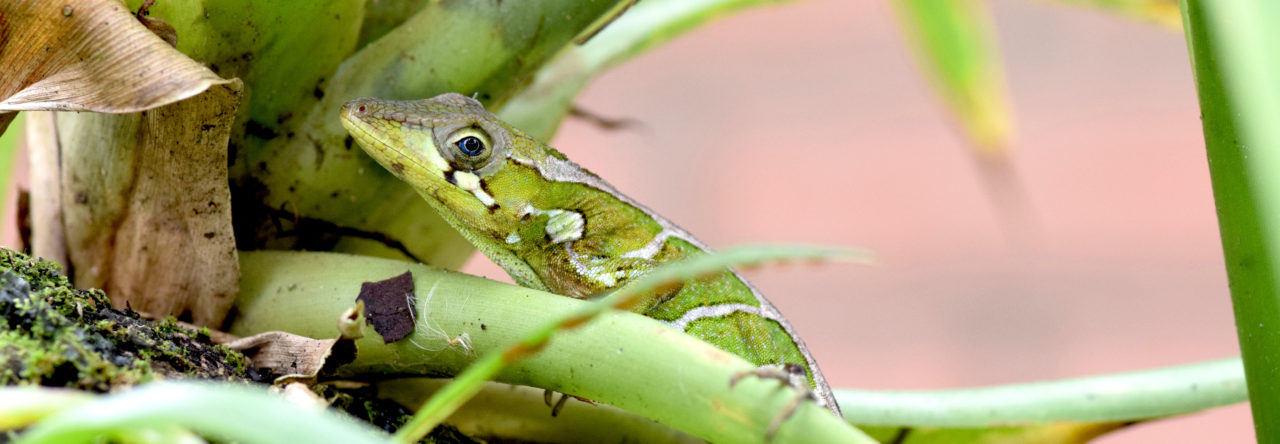 Have you heard about the extremely expensive (and delicious) coffee from Indonesia made from beans that have passed through the digestive system of civets (hence called “cat poo” coffee because civets are sometimes called civet cats? Did you know that a similar coffee is produced in Central America, made from beans pooped out by Norops anoles? Well, that’s not what this post is about.
Have you heard about the extremely expensive (and delicious) coffee from Indonesia made from beans that have passed through the digestive system of civets (hence called “cat poo” coffee because civets are sometimes called civet cats? Did you know that a similar coffee is produced in Central America, made from beans pooped out by Norops anoles? Well, that’s not what this post is about.
Rather, it’s about several recent studies on anoles in coffee plantations. One recent study, discussed at further length by Rich Glor, compares the biodiversity of sun and shade coffee plantations in Puerto Rico. The authors note at the outset that biodiversity tends to be higher in shade coffee areas, and wanted to see whether that was true in Puerto Rico. In a truly herculean effort, they censused the lizards, birds, insects and vegetation in six plantations, three shade, three sunny. This was a lot of work. Just for the lizards, they individually marked (via paint spray gun) nearly 5000 anoles.
The results are summarized in the table below.
The authors were surprised, presumably because biodiversity is generally higher in shade plantations: “Two of the anoline species for which population densities were estimable, the Puerto Rican crested anole and the barred anole, were more abundant in sun plantations. Their occurrence in higher numbers in sun plantations was unexpected.” But they shouldn’t have been; A. cristatellus and A. stratulus are more hot-loving anoles, often found in open areas, whereas the other species are generally more shade-loving. Actually, one would have predicted A. pulchellus to also be more abundant in the sun, and indeed it was, but there weren’t enough for statistical estimates.
The second study examined the herpetofauna in agroecosystems in the coffee belt in Colombia. Two anoles were found there, A. antonii and A. auratus. This study was focused primarily on reporting ecological data for the species in this area, rather than comparing different types of coffee plantations or plantations vs. natural habitats. The study found that A. antonii preferred forest, but could be found in open areas as well, and A. auratus, a grass anole if there ever was one, prefers open areas. Diet from stomach contents was also studied. Not many specimens of A. auratus were examined, but A. antonii has a wide and catholic diet, with beetles being the most frequent prey.
Now, about those bean-pooping Norops…we’ll get to that in another post.
- Evolution in Real Time on Lizard Island - March 23, 2025
- Spider Snags Adult Anolis osa - March 22, 2025
- An Homage to the Green Anoles of New Orleans - March 21, 2025



Leave a Reply